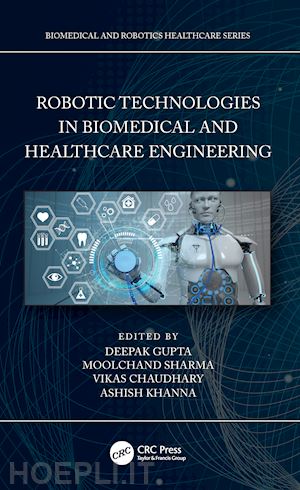New prospects for biomedical and healthcare engineering are being created by the rapid development of Robotic and Artificial Intelligence techniques. Innovative technologies such as Artificial Intelligence, Deep Learning, Robotics, and IoT are currently under huge influence in today’s modern world. For instance, a micro-nano robot allows us to study the fundamental problems at a cellular scale owing to its precise positioning and manipulation ability; the medical robot paves a new way for the low-invasive and high-e?cient clinical operation, and rehabilitation robotics is able to improve the rehabilitative e?cacy of patients. This book aims at exhibiting the latest research achievements, ?ndings, and ideas in the ?eld of robotics in biomedical and healthcare engineering, primarily focusing on the walking assistive robot, telerobotic surgery, upper/lower limb rehabilitation, and radiosurgery. As a result, a wide range of robots are being developed to serve a variety of roles within the medical environment. Robots specializing in human treatment include surgical robots and rehabilitation robots. The field of assistive and therapeutic robotic devices is also expanding rapidly. These include robots that help patients rehabilitate from severe conditions like strokes, empathic robots that assist in the care of older or physically/mentally challenged individuals, and industrial robots that take on a variety of routine tasks, such as sterilizing rooms and delivering medical supplies and equipment, including medications. The objectives of the book are in terms of advancing the state-of-the-art of robotic techniques and addressing the challenging problems in biomedical and healthcare engineering. This book Lays a good foundation for the core concepts and principles of robotics in biomedical and healthcare engineering, walking the reader through the fundamental ideas with expert ease. Progresses on the topics in a step-by-step manner and reinforces theory with a full-fledged pedagogy designed to enhance students’ understanding and offer them a practical insight into the applications of it. Features chapters that introduce and cover novel ideas in healthcare engineering like Applications of Robots in Surgery, Microrobots and Nanorobots in Healthcare Practices, Intelligent Walker for Posture Monitoring, AI-Powered Robots in Biomedical and Hybrid Intelligent Systems for Medical Diagnosis, and so on. Deepak Gupta is an Assistant Professor at the Maharaja Agrasen Institute of Technology, GGSIPU, Delhi, India. Moolchand Sharma is an Assistant Professor at the Maharaja Agrasen Institute of Technology, GGSIPU, Delhi, India. Vikas Chaudhary is a Professor at the JIMS Engineering Management Technical Campus, GGSIPU, Greater Noida, India. Ashish Khanna currently works at the Maharaja Agrasen Institute of Technology, GGSIPU, Delhi, India.











